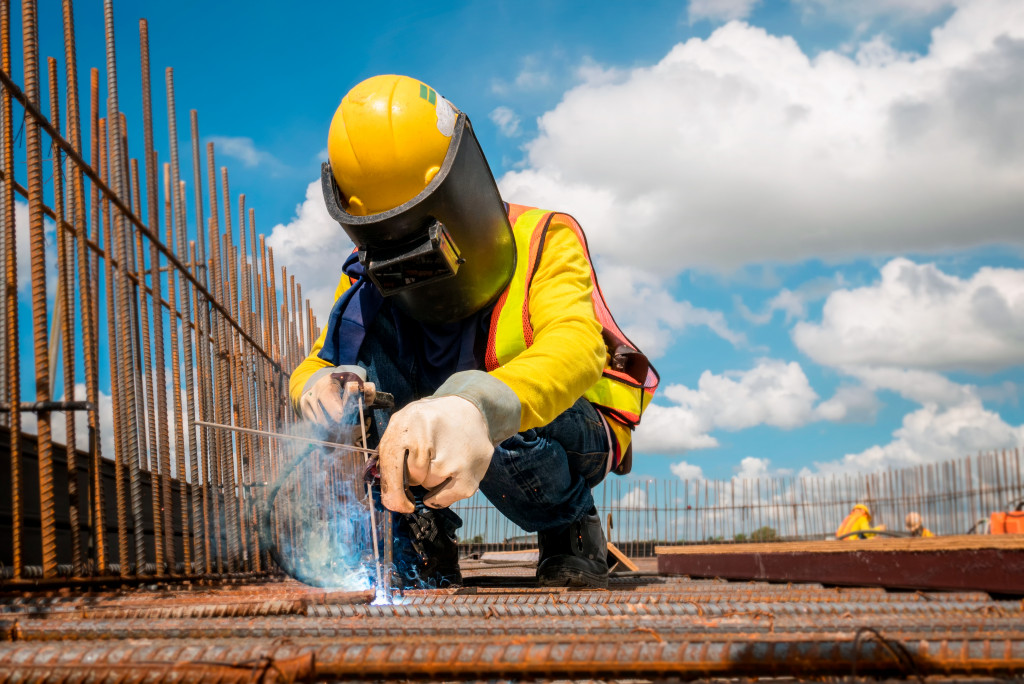According to the Occupational Safety & Health Administration, the construction industry is surrounded by hazards. The US Bureau of Labor Statistics reveals that in 2019, around 1,102 fatal injuries happened within the industry. In the United States, this accounts for about 20.7% of the total fatalities in the workplace.
Construction laborers are most prone to these injuries because they engage in various construction activities that have serious hazards. Such hazards include unguarded machinery, falling debris and construction materials, electrocutions, and being exposed to harmful substances such as asbestos and silica dust.
Because of the many hazards surrounding construction activities, promoting safety practices on the site is essential. This not only keeps the employees safe but also saves the company from incurring costs from medical and legal eventualities.
The Importance of Safety
A construction manager’s role is to identify the risks within the worksite and create preventative measures to reduce these risks. This is to ensure that all workers are safe from accidents.
- It’s required by the government.
Additionally, construction safety is mandated by OSHA and must be followed by all construction companies. Under the OSH Act of 1970, construction workers are protected by requiring employers to create a safe workplace. An employer can do so by providing enough safety training to all its members. When an employer violates the act, this may result in a lawsuit.
- It saves on cost.
The company should cover the costs of an accident that occurs in the workplace. For example, a worker who suffered from facial disfiguration due to improper safety practices may need maxillofacial surgery. The employer should cover the cost of the surgery.
As reported by the US Department of Labor, most companies spend billions annually due to occupational injuries. This seriously cuts company profits; a construction company must focus on safety management systems to prevent this. Doing so will largely decrease the medical costs for illnesses and injuries by 20 to 40%.
- It saves lives.
Profit is vital for any business, but nothing is more important than people’s lives. Having the proper safety practices at the workplace can save thousands of people from suffering from injuries and death.
Fatal accidents that occurred the most are called the “Fatal Four” in the construction industry. These are electrocution, falls, being hit by heavy objects, or being caught in between machinery. By preventing these fatal four, around 631 lives can be saved.
Promoting Safety in the Site
Engaging each member of the company to promote a safe culture at the workplace is crucial. But it doesn’t happen instantly. To promote a safety culture, it must start from top to bottom; the management, beginning with executive officers, must set a commitment to safety and always put “Safety First” into practice.
Safety First
Above anything else, safety must be a company’s topmost priority. More than schedules, productivity, or costs, a company must take care of its greatest asset: its people. For employees in the construction industry to be taken care of, safety is the number one concern.
Safety practices must be set in each project. When safety measures are put in place, employees will build trust and confidence with their employers. When there’s confidence and trust in an organization, productivity is increased. This will, in turn, reduce costs and help produce greater outputs; the better the output, the more clients and profit a company gets.
Additionally, best safety practices will speed up the process of a construction project because there will be no delays in the project due to accidents. At the same time, a construction company with an outstanding safety record will have lesser insurance costs.
Safety Training
To instill a safety culture among employees, constant and proper training is key. Doing consistent training displays a company’s commitment to having a safe work environment. At the same time, it helps remind employees to keep doing the safety practices they already know and keep safety a priority.
Employee involvement
Establish a safety committee that involves employees from high to low ranks. Involving employees from different levels ensures that every safety issue can be addressed based on what they see and experience on-site.
After knowing the issues that need addressing, review and update the safety program. Before the construction begins, there should already be a safety plan specific to a job site or a project. Potential risks and safety concerns must be identified for each project, and an action plan must be set to mitigate these hazards.
Planning is useless without the knowledge of everyone on the team, though. So make sure that every worker within site is informed about the plan. This way, the safety plan will be appropriately enforced.
Everyone is accountable
Managers are not the only ones responsible for promoting a safety culture within a company. Everyone has a responsibility. Studies from different industries show that it’s almost human error that causes accidents and fatalities: lack of awareness and lack of action to follow the set safety practices.
Therefore, to maintain a safety culture that saves lives and cuts on additional, unnecessary costs, everyone should be accountable.

